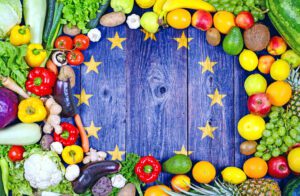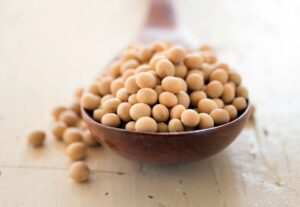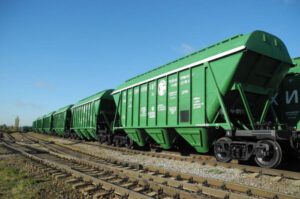
Azerbaijani gas supplies to Europe will increase by 40% to 11.5 billion cubic meters in 2022, Azerbaijani President Ilham Aliyev said.
“In 2022, our export will reach 22 billion cubic meters, of which 11.5 billion cubic meters will be supplied to consumers in Europe. In 2021, 8.2 billion cubic meters was supplied to Europe. This means a 40% increase in the supplies in 2022,” Aliyev said at the ceremony for putting into commercial operation the Gas Interconnector Greece-Bulgaria (IGB) in Sofia on Saturday.
In accordance with the agreements with the European Union, Azerbaijan plans to at least double its gas export to Europe by 2027.
For that purpose, Baku has begun consultations with its partners on the issue of expansion of the Trans-Anatolian Natural Gas Pipeline (TANAP) to 32 billion cubic meters of gas a year and the Trans Adriatic Pipeline (TAP) to 20 billion cubic meters of gas a year, Aliyev said.
“We have already begun consultations with our partners on the expansion of the TANAP from 16 billion cubic meters to 32 billion cubic meters and the TAP from 10 billion cubic meters to 20 billion cubic meters. Because without it it will be difficult to ensure additional supplies,” the president said.
Aliyev said Azerbaijan has the capabilities to increase the gas export volumes by starting extraction at some other gas deposits.

Exports of organic products from Ukraine to the countries of the European Union and Switzerland in January-June 2022 increased by 19.4% compared to the first half of 2021 – up to 160,020 tonnes from 128,840 tonnes, this happened despite problems with logistics and the blockade of Ukrainian seaports due to full-scale Russian aggression.
According to the website of the information portal OrganicInfo, by the end of 2022, Ukraine is expected to reduce land under organic products due to the temporary occupation of its southern regions. At the same time, in the Ukrainian territories liberated from Russian occupation in early April, the work of organic producers has been almost completely resumed this season.
It is specified that in general, in 2021, Ukraine exported about 260,000 tonnes of organic products for a total amount of about $220 million to more than 30 countries of the world, of which 82% of the revenue came from the EU countries.
“In 2021, Ukraine slightly reduced the volume of supplies of organic products to the EU, but still remains in the TOP 5 largest suppliers of organic products in the EU. In 2021 the total share of Ukrainian imports amounted to 6.6% (of all imports to the EU),” OrganicInfo said.
OrganicInfo is an information portal created by the international charitable environmental organization Green Dossier, which aims to promote organic production, organic food and sustainable lifestyles.

Ukraine exported 1.39 million tons of soybeans in the past marketing campaign 2021/2022 (MR, earthworm), which is only 5% less than the indicator 2020/2021.
With the last cob of Russian and Russian aggression in Ukraine, soybean has become the only olive crop, the average monthly export rate of such a mature crop – in birch sickle 2022 soybean export 507 Ths. Tons, that is 65% more, seemed lower for Birken-Serpni 2021.
The main importers of Ukrainian soy in 2021/2022 were the European Union regions and Turechchina. With the same EU in Birch-Serpni 2022, the import of Ukrainian soy increased by 76% and by 36% over the season, while Turechchina on the cob accelerated the purchase and reactivated them on the cob 2022. For the dates of the exchange 2021 imhr / 2022 MR from Ukraine to Turkey, 536 thousand tons of soybeans (39% of total exports), which is 2% less than MR 2020/21.
At the same time, in the 2022 birch crescent season, soybean exports from Ukraine to Turkey will correspond to the same period 2020/2021MR. In fact, according to the efforts of the association “Ukrainian Club of Agrarian Business” (UCAB), Ukraine exported 100 thousand tons of soybeans, sickle beans – 148 yews. tons for lime – 52 thousand. tons, for Chervni – 90 yew. metric tons

JSC “Ukrzaliznytsia” (UZ) for the period September 1-21, 2022 exported a record 2.25 million tons of grain cargo since the beginning of Russian aggression, which is 40.5% more than in August (1.6 million tons), the deputy director said Department of commercial work of UZ Valery Tkachev.
“We have set another record for the transportation of goods for export – 2.25 million tons, and this is only for the 21st day of September. I think that by the end of the month we will be able to reach the figure of 2.5 million tons, maybe we will try to transport up to 3 million tons,” Tkachev said during an online meeting with industry participants on Thursday.
According to him, the company achieved such growth due to the increase in transportation of agricultural products to three Ukrainian seaports, unblocked under the Istanbul grain agreements.
At the same time, he clarified that 1,516 thousand tons of agricultural products were delivered to ports for further shipments to third countries (for the whole of August, almost half as much – 795 thousand tons), while 732 thousand tons of grain were transported through land border crossings on the western border (in August – 805 thousand tons, -9%).
According to him, since the beginning of September, Ukrzaliznytsia has loaded a total of 1.89 million tons of grain cargo into wagons (for the whole of August – 1.74 million tons), which is 27.5% of the total loaded volume for this month of 6.32 million tons (9.28 million tons were shipped for export in August).
The representative of UZ also clarified that for September 1-21, the average daily loading of the company’s wagons amounted to about 90 thousand tons (in August – 56 thousand tons), reaching a record since the beginning of Russian aggression. So, on September 20, a record 122 thousand tons of agricultural products were loaded into the cars, on September 21 – 101.4 thousand tons, on September 19 – 112.8 thousand tons, on September 18 – 83.2 thousand tons.
“Now the loading through the network has also grown significantly, in recent days we have been loading more than 100 thousand tons per day. That is, the loading through the network is growing, and this is all thanks to the opening of our grain corridor,” the deputy director emphasized during the meeting.
Over the 21st day of September, Ukrzaliznytsia also exported 89.7 thousand tons of sunflower oil, as well as 132.7 thousand tons of all kinds of meal, through land border crossings and ports.
Tkachev clarified that over the specified period, the average daily handling of wagons of all types at border crossings sank by 6% – to 1,731 thousand wagons compared to 1,848 thousand wagons on average in August, while the transfer of grain wagons amounted to 536 wagons per day, which 14% more than the average for August (469 grain wagons per day).
According to him, the most intensive movement of wagons occurs through the Izov border crossing – 157 wagons / day, Batevo – 80 wagons / day, Yagodin – 48 wagons / day, Vadul-Siret – 47 wagons / day.
The UZ representative clarified that by September 21, the total queue of wagons of all nomenclatures at the border had decreased by 24% (or by 6.64 thousand wagons) compared to September 1, to 18.96 thousand units. from 25.12 thousand units At the same time, by September 21, there were 4.78 thousand grain wagons in the queue, while on September 1 this figure was 8.48 thousand wagons with grain (-44%, or by 3.69 thousand wagons).
Tkachev noted that the queue for the delivery of grain cargo, if you look at the availability of wagons and the daily delivery, is about nine days of waiting.
“At the same time, it is clear that we have crossings where the situation is more difficult, where you have to stand for 20 days, and there are places where there is no queue. In general, we have a queue of 9 days for the presence of a wagon fleet,” the UZ representative specified.
He also stressed that after the reorientation in early September of the main flow of grain cargo in the direction of Ukrainian seaports, UZ had the opportunity to additionally receive grain cargo for export through land border crossings on the western borders of Ukraine.

The Joint Coordinating Center (JCC) has authorized the movement of more than 400 vessels during its work within the framework of the Black Sea Grain Initiative, the UN reported.
“As of September 23, the total tonnage of grain and other agricultural products exported from three Ukrainian ports is 4,556,311 tons. In total, 420 ships have been allowed to move at the moment – 217 for arrival in Ukrainian ports and 203 for leaving them,” – the message says.
It is noted that on September 23, 12 ships with more than 200 thousand tons of food left Ukrainian ports after receiving permission from the SKC.
The UN explained that five ships – Zeko Y (8.2 thousand tons of wheat), Olma (5150 tons of soybeans), Merry M (4450 tons of sunflower meal), Gudena (3860 tons of sunflower oil), Nil Demir (3, 7 thousand tons of peas) – went to Turkey.
In addition, the Sea Dove (33 thousand tons of corn) and Lady Ayana (27 thousand tons of corn) ships sailed for Italy, the Fortuna dry cargo ship (10,252 tons of sunflower meal) – for France, the Gem Star ship (31,039 tons of corn) – to the Netherlands.
Dry cargo ship Mo Gan Shan (57,311 tons of wheat) was poisoned in Bangladesh, the ship Mavka (11,950 tons of sunflower oil) – in Romania, Tzarevich (10 thousand tons of sunflower meal) – in Bulgaria.
On July 22, in Istanbul, with the participation of the UN, Ukraine, Turkey and Russia, a document was signed on the creation of a corridor for the export of grain from three Ukrainian ports – Chornomorsk, Odessa and Pivdenny.